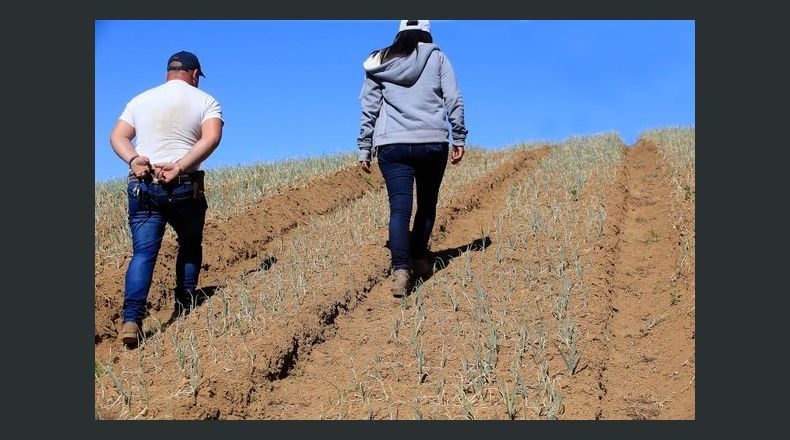
The drought, which has been caused by the absence of rains since October, resulted in the loss of up to 50% of the expected crops in onions, potatoes, carrots, and beans, in the upper area of Cartago. It has also affected the livestock sector in regions such as Brunca (south), according to officials of the Ministry of Agriculture and Livestock (MAG).
Other areas are already beginning to experience problems, even in crop areas that have irrigation, due to the low level of natural water sources. Such is the case of Llano Grande de Cartago, where surface water sources (rivers and streams) are running out of liquid, which will impact strawberry, onion, flower, and milk farming.
Producers and authorities were surprised that there was a water deficit in the Caribbean region, where an increase in rainfall was expected due to the presence of El Niño. The most affected area is the southern Caribbean and particularly the Valle de la Estrella and Sixaola, where there is an 85% deficit of water compared to the historical average of this time, said the regional director of the MAG, Nelson Kooper.
The most affected crop in this last area is plantain. There will be fewer bunches than usual, and they will be smaller and each fruit will be smaller than usual. According to Kooper, in the coming months there will be problems with the supply of this product.
Banana crops have been similarly affected by the drought. Jorge Sauma, the general manager of the National Banana Corporation (Corbana) said that the water deficit had caused banana exports, the first export product of Costa Rica, to fall an estimated 15% in January.
When asked about the impact for the whole year, Sauma said that it was still too early to say, but that considering the problems caused by the scale (an insect that proliferates with the drought), the reduction in rainfall and its poor distribution, he would expect there would be a 15% or more decrease.
Francisco Flores, the director of the Ministry of Agriculture and Livestock (MAG) in the Eastern Central region (Cartago and Los Santos), acknowledged the impact of the drought on several crops but said that it would be irresponsible to conclude that the situation would affect the supply and prices in the coming weeks.
"Saying that this is going to affect the offer is irresponsible, but there is an affectation and we are working with the people that didn't have access to water reservoirs or other sources," Flores said.
Source: eleconomista.net



Reader Comments
to our Newsletter